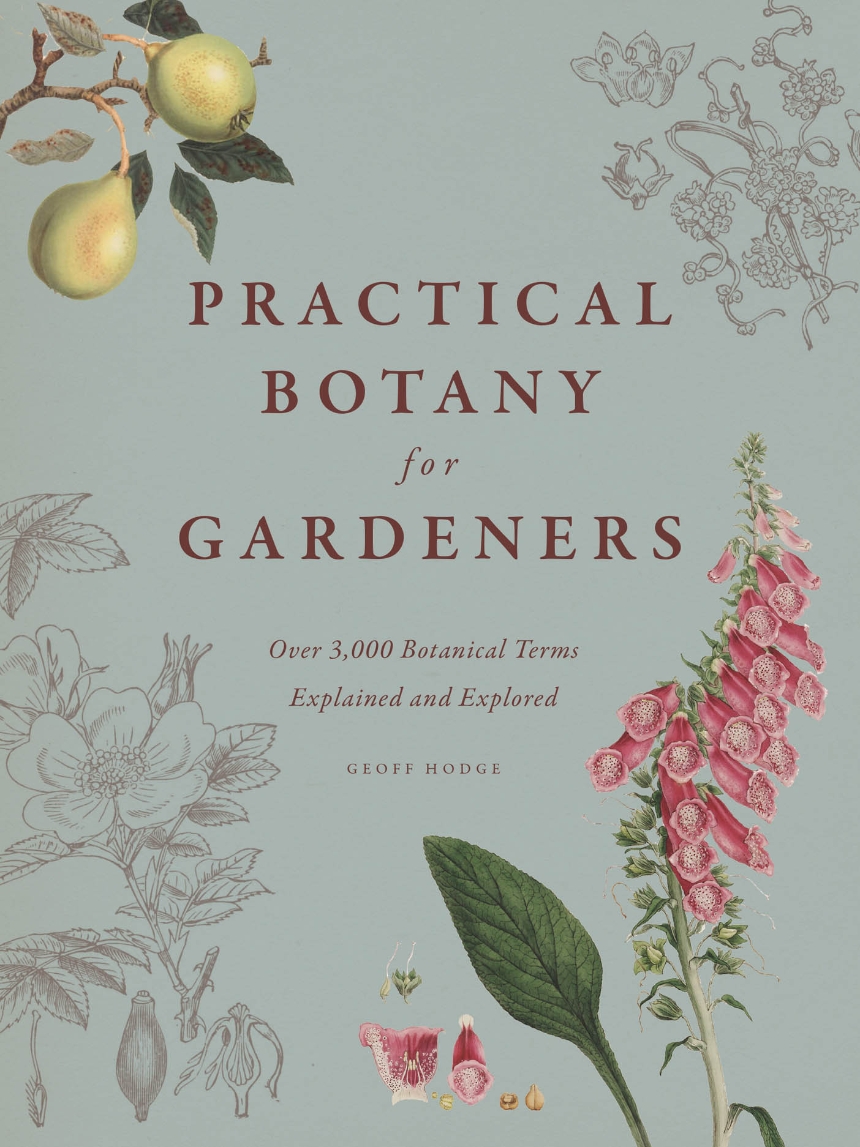Practical Botany for Gardeners
Over 3,000 Botanical Terms Explained and Explored
9780226093932
9780226094090
Practical Botany for Gardeners
Over 3,000 Botanical Terms Explained and Explored
Gardening can be frustratingly shrouded in secrecy. Fickle plants make seemingly spontaneous decisions to bloom or bust, seeds sprout magically in the blink of an eye, and deep-rooted mysteries unfold underground and out of sight. Understanding basic botany is like unlocking a horticultural code; fortunately learning a little science can reveal the secrets of the botanical universe and shed some light on what’s really going on in your garden.
Practical Botany for Gardeners provides an elegant and accessible introduction to the world of botany. It presents the essentials that every gardener needs to know, connecting explanations of scientific facts with useful gardening tips. Flip to the roots section and you’ll not only learn how different types of roots support a plant but also find that adding fungi to soil aids growth. The pruning section both defines “lateral buds” and explains how far back on a shoot to cut in order to propagate them.
The book breaks down key areas and terminology with easy-to-navigate chapters arranged by theme, such as plant types, plant parts, inner workings, and external factors. “Great Botanists” and “Botany in Action” boxes delve deeper into the fascinating byways of plant science. This multifaceted book also includes two hundred botanical illustrations and basic diagrams that hearken to the classic roots of botany.
Part handbook, part reference, Practical Botany for Gardeners is a beautifully captivating read. It’s a must for garden lovers and backyard botanists who want to grow and nurture their own plant knowledge.
Practical Botany for Gardeners provides an elegant and accessible introduction to the world of botany. It presents the essentials that every gardener needs to know, connecting explanations of scientific facts with useful gardening tips. Flip to the roots section and you’ll not only learn how different types of roots support a plant but also find that adding fungi to soil aids growth. The pruning section both defines “lateral buds” and explains how far back on a shoot to cut in order to propagate them.
The book breaks down key areas and terminology with easy-to-navigate chapters arranged by theme, such as plant types, plant parts, inner workings, and external factors. “Great Botanists” and “Botany in Action” boxes delve deeper into the fascinating byways of plant science. This multifaceted book also includes two hundred botanical illustrations and basic diagrams that hearken to the classic roots of botany.
Part handbook, part reference, Practical Botany for Gardeners is a beautifully captivating read. It’s a must for garden lovers and backyard botanists who want to grow and nurture their own plant knowledge.
See sample pages from the book (PDF format).
224 pages | 200 color plates | 7 x 9 | © 2013
Biological Sciences: Botany, Natural History
Reviews
Table of Contents
How to use this book
A short history of botany
Chapter 1: The Plant Kingdom
Algae
Mosses and liverworts
Lichens
Ferns and their relatives
Gymnosperms: conifers and their relatives
Angiosperms: flowering plants
Monocotyledons versus dicotyledons
Plant naming and common names
Plant families
Genus
Species
Hybrids and cultivars
Chapter 2: Growth, Form, and Function
Plant growth and development
Buds
Roots
Stems
Leaves
Flowers
Seeds
Fruit
Bulbs and other underground food storage organs
Chapter 3: Inner Workings
Cells and cell division
Photosynthesis
Plant nutrition
Nutrient and water distribution
Plant hormones
Chapter 4: Reproduction
Vegetative reproduction
Sexual reproduction
Plant breeding—evolution in cultivation
Chapter 5: The Beginning of Life
Development of the seed and fruit
Seed dormancy
Seed germination
Sowing and saving seeds
Seed saving
Chapter 6: External Factors
The soil
Soil pH
Soil fertility
Soil moisture and rainwater
Nutrients and feeding
Life above ground
Chapter 7: Pruning
Why prune?
Pruning trees
Pruning for size and shape
Pruning for display
Chapter 8: Botany and the Senses
Seeing light
Sensing scent
Scent as an attractant
Feeling vibrations
Chapter 9: Pests, Diseases, and Disorders
Insect pests
Other common pests
Fungi and fungal diseases
Viral diseases
Bacterial diseases
Parasitic plants
How plants defend themselves
Breeding for resistance to pests and diseases
Physiological disorders
Index
Bibliography
Credits and websites
Botanists and Botanical Illustrators
Gregor Johann Mendel
Barbara McClintock
Robert Fortune
Prospero Alpini
Richard Spruce
Charles Sprague Sargent
Luther Burbank
Franz and Ferdinand Bauer
Matilda Smith
John Lindley FRS
Marianne North
Pierre-Joseph Redouté
James Sowerby
Vera Scarth-Johnson OAM
A short history of botany
Chapter 1: The Plant Kingdom
Algae
Mosses and liverworts
Lichens
Ferns and their relatives
Gymnosperms: conifers and their relatives
Angiosperms: flowering plants
Monocotyledons versus dicotyledons
Plant naming and common names
Plant families
Genus
Species
Hybrids and cultivars
Chapter 2: Growth, Form, and Function
Plant growth and development
Buds
Roots
Stems
Leaves
Flowers
Seeds
Fruit
Bulbs and other underground food storage organs
Chapter 3: Inner Workings
Cells and cell division
Photosynthesis
Plant nutrition
Nutrient and water distribution
Plant hormones
Chapter 4: Reproduction
Vegetative reproduction
Sexual reproduction
Plant breeding—evolution in cultivation
Chapter 5: The Beginning of Life
Development of the seed and fruit
Seed dormancy
Seed germination
Sowing and saving seeds
Seed saving
Chapter 6: External Factors
The soil
Soil pH
Soil fertility
Soil moisture and rainwater
Nutrients and feeding
Life above ground
Chapter 7: Pruning
Why prune?
Pruning trees
Pruning for size and shape
Pruning for display
Chapter 8: Botany and the Senses
Seeing light
Sensing scent
Scent as an attractant
Feeling vibrations
Chapter 9: Pests, Diseases, and Disorders
Insect pests
Other common pests
Fungi and fungal diseases
Viral diseases
Bacterial diseases
Parasitic plants
How plants defend themselves
Breeding for resistance to pests and diseases
Physiological disorders
Index
Bibliography
Credits and websites
Botanists and Botanical Illustrators
Gregor Johann Mendel
Barbara McClintock
Robert Fortune
Prospero Alpini
Richard Spruce
Charles Sprague Sargent
Luther Burbank
Franz and Ferdinand Bauer
Matilda Smith
John Lindley FRS
Marianne North
Pierre-Joseph Redouté
James Sowerby
Vera Scarth-Johnson OAM
